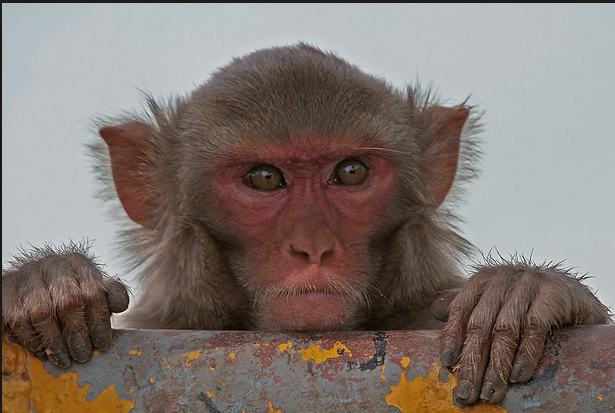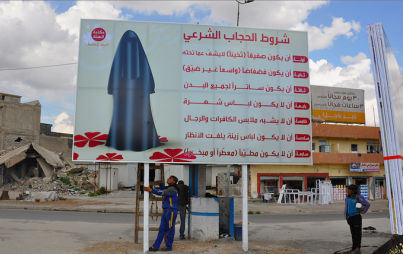
Welcome to New Delhi. Bustling capital city of India, and home to such features as Gandhi’s final residence, a thriving arts scene, a massive economic sector and 30,000 red-faced rhesus monkeys who torment the population.
Yes, the indigenous species has apparently had enough of the jungle, and appears to be hell-bent on creating a Planet of the Apes scenario in one of the world’s largest cities. Monkeys loiter in parks and threaten children, chew through internet cables, break into cars, rob offices and steal anything they can get their opposable-thumbed hands on: Alcohol, glasses, medical equipment, clothes. Their greed know no bounds.
Restaurants and people carrying food are said to be prime targets—which is especially disturbing since it’s estimated that about 90 percent of the monkeys carry tuberculosis. Because really, what’s a horrifying monkey infestation without the threat of disease thrown in?
In 2007 New Delhi’s deputy mayor even died after falling from his terrace during a monkey attack. What can be done to combat these guileless monkey predators? The city is desperately trying various measures.
Langurs
Trying to fight fire with fire, New Delhi utilizes another species of monkey—large, gray langurs—which are menacing enough to sometimes scare off the smaller rhesus monkeys. In the past, the local government had contracts with about 30 so-called “langur men” who were paid to patrol the city with their trustee rhesus-scaring primates.
But langurs are designated as a protected species, and since 2012 India’s environment ministry has been cracking down on local governments and citizens who own, trade or hire out the animals. The rhesus crisis has insured a black market langur business, however, reportedly especially among government officials and elite members of the city.
Population Control
India’s Central Zoo Authority has been working with the National Primate Center in California to reduce the rhesus population through reproductive control. In a pilot program in the northern Indian state of Uttarakhand, officials have tried strategically leaving contraceptives left in bait food, and sterilizing captured monkeys. But Delhi still languishes, since the trials haven’t yet been extended to that municipality.
Shock Tape
The local government is also in negotiations with an Indian company to supply electric shock tape for government buildings. The makers of Avi-Simian Shock Tape claim monkeys (and birds to boot!) receive a small electric shock when touching the aluminum wires in the tape, thus deterring them from naughty antics.
Man-power
And then there’s good old-fashioned elbow grease. When one high-ranking executive elicited the services of a langur man after a rhesus monkey bit his housekeeper’s daughter, a whole pack of local rhesus ruffians “mobbed the langur and beat it up.” Ultimately, he found the only thing that worked to drive the monkeys away was “a man with a big stick.” Simple but effective.
The Delhi government similarly employs monkey catchers to straight-up lasso about 500 monkeys a year.
Despite these efforts, the monkey population continues to enjoy the upper hand in its siege of Delhi. But don’t feel too bad: Apparently locals actively feed the invaders twice a week during holy days associated with a Hindu “monkey-faced” god Hanuman (come on, people), so they have a hand in continuing their own ape destruction.
Image: wikimedia.org






